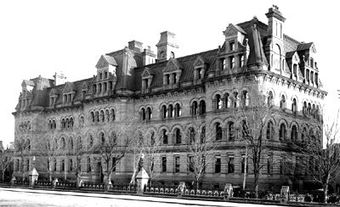International Boundary Commission
The International Boundary Commission (IBC), comprising a Canadian and an American section, is responsible for the maintenance and supervision of the boundary line between the United States and Canada under the terms of the 1925 Boundary Demarcation Treaty. Specifically, the IBC inspects the boundary line, repairs or replaces damaged boundary markers, maintains a clear 6 m vista through the brush and trees along the border, and helps resolve disputes as they arise. The Canadian section is empowered by the International Boundary Commission Act; it is located within Natural Resources Canada for administration purposes and reports to the minister for foreign affairs. There is one Canadian and one American commissioner, who meet twice a year, once in Ottawa and once in Washington.
In July 2007, in an unprecedented action, U.S. president George W. Bush fired his appointed commissioner, Dennis Schornack, who refused to back down in his determination that a 1.2 m-high concrete wall constructed by a couple around their border property in Washington state violated the boundary treaty. The controversy sparked the first-ever lawsuit against the International Boundary Commission and debate in Washington over the extent of presidential authority, private property rights and prerogatives of national security. The US Department of Justice maintained that the president could fire its border commissioner, while Schornack argued that the International Boundary Commission was not an agency of the United States. The Canadian government declined to comment on the basis that the Canadian section of the commission was not a party to the lawsuit.
See alsoTERRITORIAL EVOLUTION.

 Share on Facebook
Share on Facebook Share on X
Share on X Share by Email
Share by Email Share on Google Classroom
Share on Google Classroom

